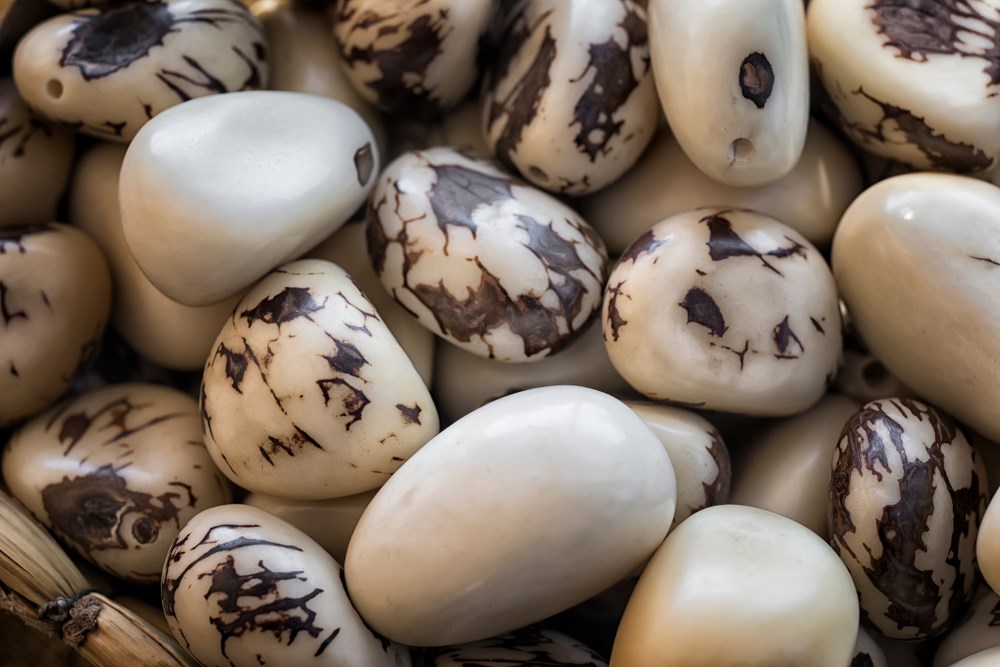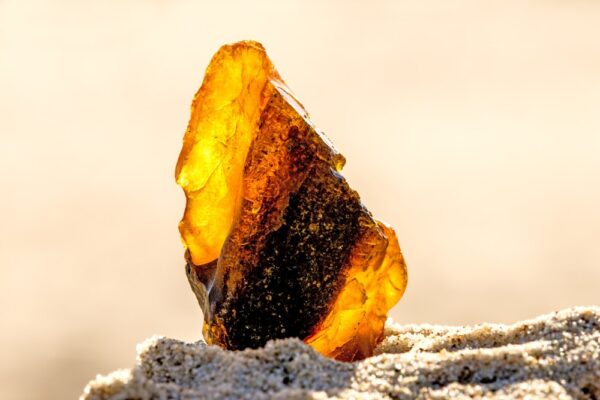
Amber: nature’s gold
Amber is fossilized tree resin that has been appreciated for its color and natural beauty since Neolithic times
The oldest Amber recovered dates to the late Carboniferous period (320 million years ago). becoming abundant long after the Carboniferous, in the Early Cretaceous, 150 million years ago, when it is found in association with insects.
The oldest Amber with arthropod inclusions comes from the Late Triassic (late Carnian c. 230 Ma) of Italy, where four microscopic (0.2–0.1 mm) mites, Triasacarus, Ampezzoa, Minyacarus and Cheirolepidoptus, and a poorly preserved nematoceran fly were found in millimetre-sized droplets of Amber. The oldest Amber with significant numbers of arthropod inclusions comes from Lebanon. This Amber, referred to as Lebanese Amber, is roughly 125–135 million years old, is considered of high scientific value, providing evidence of some of the oldest sampled ecosystems.
In Lebanon, more than 450 outcrops of Lower Cretaceous Amber and even older Jurassic Amber has been found recently in Lebanon as well. Many remarkable insects and spiders were recently discovered in the Amber of Jordan.
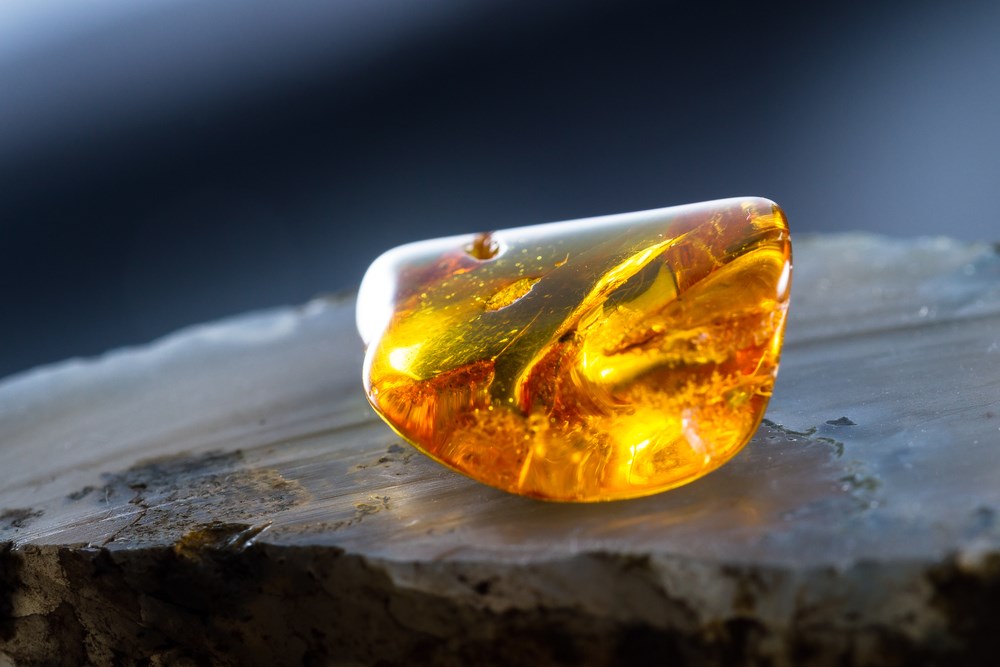
Much valued from antiquity to the present as a gemstone, Amber is made into a variety of decorative objects and wdely used in jewelry making.
The word Amber derives from Arabic ʿanbar عنبر (and from Middle Persian ambar) via Middle Latin ambar and Middle French Ambre.
In the Romance languages, the sense of the word was extended to Baltic Amber (fossil resin) from as early as the late 13th century. At first called white or yellow Amber (ambre jaune).
The classical names for Amber, Latin electrum and Ancient Greek ἤλεκτρον (ēlektron), are connected to a term ἠλέκτωρ (ēlektōr) meaning “beaming Sun”. According to myth, when Phaëton son of Helios (the Sun) was killed, his mourning sisters became poplar trees, and their tears became Amber.
The ancient Italic peoples of southern Italy used to work Amber; the National Archaeological Museum of Siritide (Museo Archeologico Nazionale della Siritide) at Policoro in the province of Matera (Basilicata) displays important surviving examples. Amber used in antiquity, as at Mycenae and in the prehistory of the Mediterranean, comes from deposits in Sicily.
Amber has a long history of use in China, with the first written record from 200 BCE. Early in the 19th century, the first reports of amber found in North America came from discoveries in New Jersey along Crosswicks Creek near Trenton, at Camden, and near Woodbury.
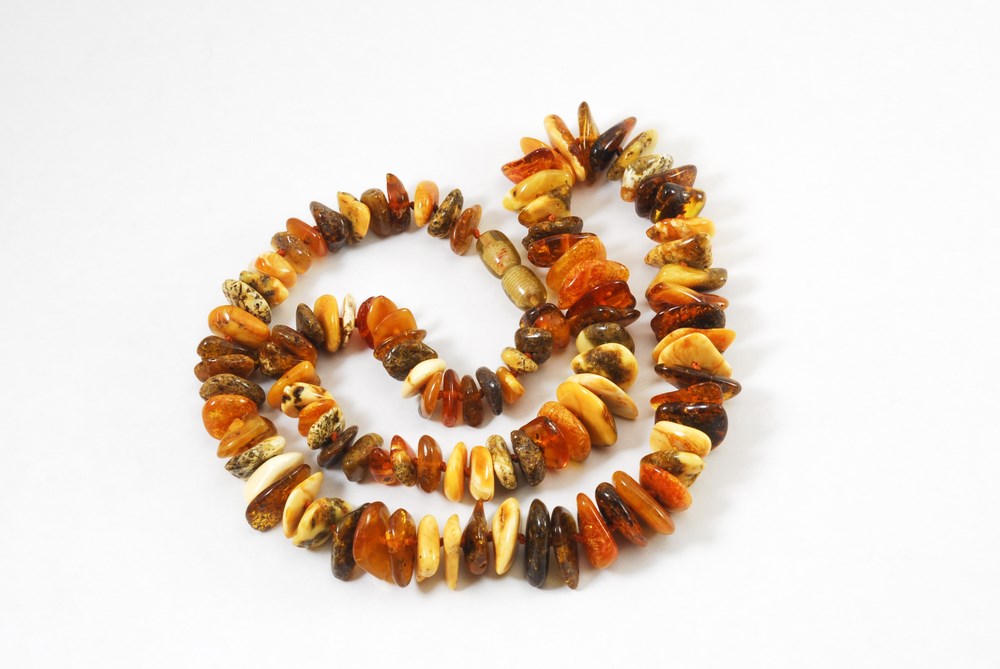
VARIETIES
Amber occurs in a range of different colors. As well as the usual yellow-orange-brown that is associated with the color “amber”, Amber can range from a whitish color through a pale lemon yellow, to brown and almost black. Other uncommon colors include red amber (sometimes known as “cherry amber”), green amber, and even blue amber, which is rare and highly sought after.
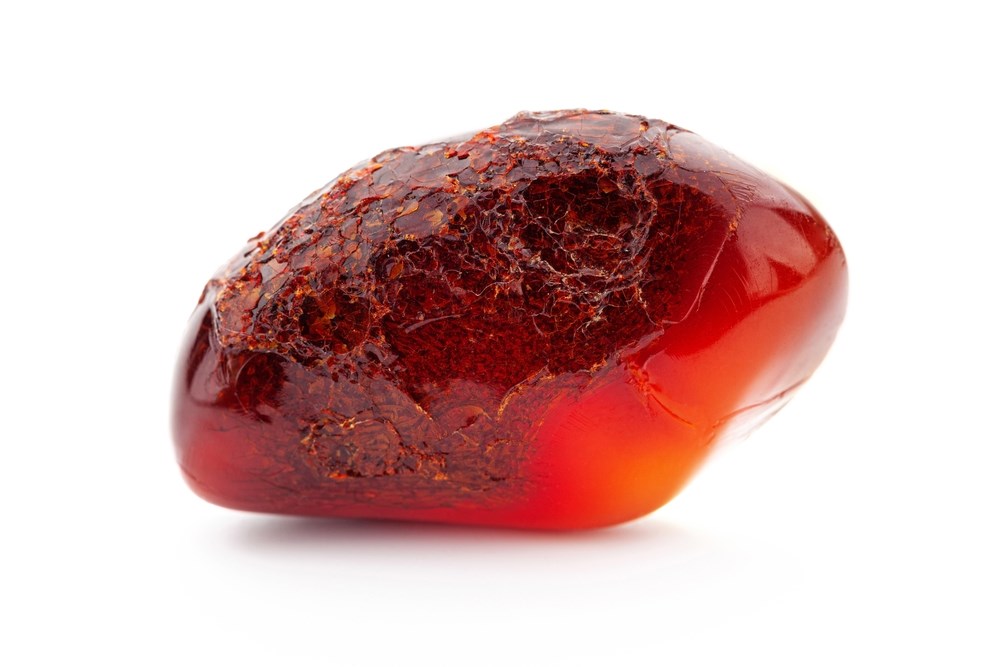
Yellow Amber is a hard fossil resin from evergreen trees, and despite the name it can be translucent, yellow, orange, or brown colored. Known to the Iranians by the Pahlavi compound word kah-ruba (from kah “straw” plus rubay “attract, snatch”, referring to its electrical properties), which entered Arabic as kahraba’ or kahraba (which later became the Arabic word for electricity, كهرباء kahrabā’), it too was called Amber in Europe (Old French and Middle English ambre).
Found along the southern shore of the Baltic Sea, yellow amber reached the Middle East and western Europe via trade. The resin’s most popular use was, for ornamentation—easily cut and polished, it could be transformed into beautiful jewelry.
Much of the most highly prized Amber is transparent, in contrast to the very common cloudy amber and opaque Amber. Opaque amber contains numerous minute bubbles. This kind of amber is known as “bony amber”.
Although all Dominican amber is fluorescent, the rarest Dominican amber is blue Amber. It turns blue in natural sunlight.
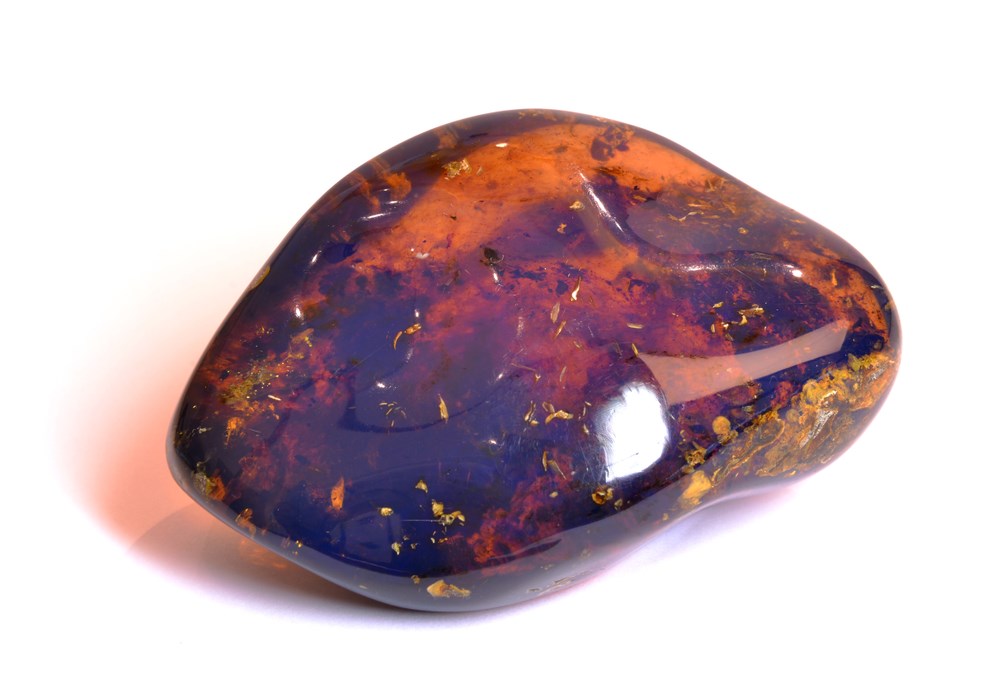
Amber has long been used in folk medicine for its purported healing properties. Amber and extracts were used from the time of Hippocrates in ancient Greece for a wide variety of treatments through the Middle Ages and up until the early twentieth century. Traditional Chinese medicine uses amber to “tranquilize the mind”.


